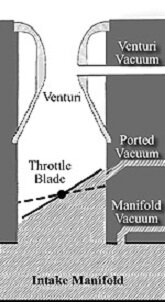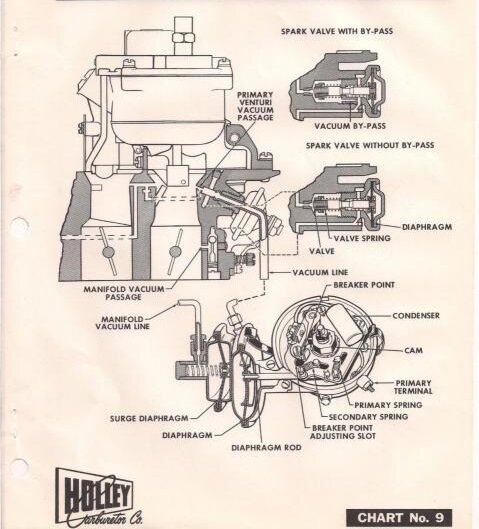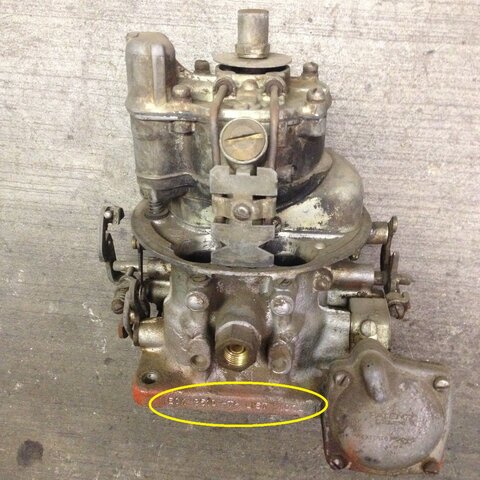swatson999
Click here to upgrade
- Last seen
- Joined
- Mar 18, 2021
- Thunderbird Year
- 1956
I have a 56 with Holley 4000 carb and dual-chamber vacuum advance. We're having trouble getting this set-up to work properly. The symptoms:
Following the instructions, disconnect the ported vacuum and set initial advance to 6 degrees. Good vacuum from the manifold. Connecting the ported line, from the carb, the advance instantly goes to 34 degrees. Here's what's been done to try to understand and solve this:
Checked fuel flow, filter, etc. All good.
Check all vacuum lines - no leaks that we can find, good vacuum (18" or so) from the bottom of the carb at the throttle plate.
Replaced dual diaphragm with a rebuilt unit - no change.
Replaced spark control valve - no change.
Removed carb and looked in the chamber at the bottom where the port to valve is - no check ball was present, but all passages are clear; used carb cleaner throughout to ensure good clean passageways.
It's as if the ported vacuum line is *always* pulling full vacuum, but from the manual, this line should be closed at idle, opening under acceleration, and the control valve retarding the spark slightly under high acceleration and load to prevent pinging.
What the ever-loving heck is going on here? Should there be a check ball in that chamber? Or not? Why are we getting such massive advance from the word go? The carb was rebuilt about a year and a half ago, and has seemed to work just fine until recently (although I did have occasional instances of the engine not making power during high acceleration events, maybe 1 ever 2-3 months, until recently, when it just flat bogged down and stalled under any kind of load and acceleration, consistently). Something has changed or broken, but we are stuck...any advice is greatly appreciated.
Following the instructions, disconnect the ported vacuum and set initial advance to 6 degrees. Good vacuum from the manifold. Connecting the ported line, from the carb, the advance instantly goes to 34 degrees. Here's what's been done to try to understand and solve this:
Checked fuel flow, filter, etc. All good.
Check all vacuum lines - no leaks that we can find, good vacuum (18" or so) from the bottom of the carb at the throttle plate.
Replaced dual diaphragm with a rebuilt unit - no change.
Replaced spark control valve - no change.
Removed carb and looked in the chamber at the bottom where the port to valve is - no check ball was present, but all passages are clear; used carb cleaner throughout to ensure good clean passageways.
It's as if the ported vacuum line is *always* pulling full vacuum, but from the manual, this line should be closed at idle, opening under acceleration, and the control valve retarding the spark slightly under high acceleration and load to prevent pinging.
What the ever-loving heck is going on here? Should there be a check ball in that chamber? Or not? Why are we getting such massive advance from the word go? The carb was rebuilt about a year and a half ago, and has seemed to work just fine until recently (although I did have occasional instances of the engine not making power during high acceleration events, maybe 1 ever 2-3 months, until recently, when it just flat bogged down and stalled under any kind of load and acceleration, consistently). Something has changed or broken, but we are stuck...any advice is greatly appreciated.





